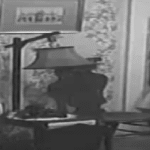The 1958 film South Pacific, directed by Joshua Logan and adapted from the hit 1949 Rodgers and Hammerstein Broadway musical of the same name, is a sweeping, technicolor ode to love, war, and prejudice set against the lush, exotic backdrop of the South Pacific during World War II. With its vibrant visuals, emotionally charged musical numbers, and bold commentary on race and identity, the film remains a significant cultural artifact that continues to resonate with audiences decades after its release.
South Pacific was based on James A. Michener’s Pulitzer Prize-winning book Tales of the South Pacific, a collection of loosely connected stories inspired by the author’s own experiences as a lieutenant commander in the U.S. Navy during the war. The film version adapts several of these stories, weaving them into a single narrative that centers around two primary romantic arcs: the love affair between U.S. Navy nurse Nellie Forbush (Mitzi Gaynor) and French plantation owner Emile de Becque (Rossano Brazzi), and the doomed romance between Lieutenant Joseph Cable (John Kerr) and a young Tonkinese woman named Liat (France Nuyen).
The film is remembered as much for its stirring romance and beautiful scenery as for its bold thematic exploration. Rodgers and Hammerstein, known for infusing their musicals with social commentary, did not shy away from tackling the issues of racism and cultural intolerance—subjects that were especially provocative for audiences of the 1950s.
Shot on location in Hawaii, South Pacific offers a visual escape into tropical paradise, a choice that adds an undeniable authenticity and allure to the story. Cinematographer Leon Shamroy used the widescreen Todd-AO process to capture the grandeur of the islands, from the azure seas to the sweeping beaches, creating an immersive experience that captivated 1950s moviegoers.
However, the film’s idyllic setting serves as more than just eye candy. It functions as a paradoxical stage, a beautiful, seemingly untouched landscape that stands in stark contrast to the ugliness of war and racial prejudice simmering beneath the surface. The clash between the natural beauty of the islands and the moral ugliness of human behavior is one of South Pacific’s most potent undercurrents.
One of the film’s most groundbreaking aspects is its direct confrontation with racism. In an era when Hollywood often skirted around difficult topics, South Pacific tackled it head-on, especially through the song “You’ve Got to Be Carefully Taught.” Sung by Lieutenant Cable, the lyrics make a bold claim—that prejudice is not innate but learned behavior, instilled through societal conditioning:
“You’ve got to be taught to hate and fear / You’ve got to be taught from year to year…”
This message was controversial at the time. Some Southern lawmakers even called for the song to be removed, considering it politically subversive. Rodgers and Hammerstein, to their credit, stood firm, and the song remains one of the most poignant and powerful in musical theater history.
Mitzi Gaynor brought a bright, vivacious energy to the role of Nellie Forbush, a “cockeyed optimist” from Arkansas whose naivety is challenged when she discovers that Emile has mixed-race children from a previous relationship. Gaynor’s performance walks a fine line between charm and self-delusion, effectively portraying a woman caught between her ideals and ingrained biases.
Rossano Brazzi, an Italian actor, played Emile de Becque, though his singing voice was dubbed by opera singer Giorgio Tozzi. While some critics pointed out the discrepancy in voice and appearance, Brazzi’s dignified, worldly portrayal lent gravitas to the character.
John Kerr and France Nuyen’s subplot added emotional weight and a tragic dimension to the film. Their interracial romance, doomed by Cable’s inability to defy societal expectations, drives home the central message of the film: love often falters in the face of ingrained prejudice.
The film’s soundtrack is one of its most enduring legacies. Songs like “Some Enchanted Evening,” “Bali Ha’i,” and “I’m Gonna Wash That Man Right Outa My Hair” have transcended the film, becoming staples of the American musical canon. The music not only enhances the emotional resonance of the story but also serves as a vehicle for its deeper messages.
The score is lush and orchestral, blending seamlessly with the natural sounds of the island setting. The musical numbers are integrated into the narrative in ways that illuminate character development and thematic tension, rather than simply providing entertainment.
One of the most criticized aspects of the film is its use of colored filters during musical numbers, a decision made by director Joshua Logan in an attempt to visually reflect the emotional tone of each scene. For example, scenes may be bathed in deep red or blue hues to signify passion or melancholy. While innovative, the technique was polarizing, with some viewers finding it distracting or heavy-handed.
Despite this, the film’s visual ambition cannot be understated. It experimented with mood and tone in ways that many musicals of the era did not dare to attempt, showing a willingness to take risks even at the cost of critical consensus.
Upon its release, South Pacific was a commercial success, grossing over $36 million, a massive sum at the time—and winning the Academy Award for Best Sound, among several nominations. It also won three Golden Globes, including Best Motion Picture, Musical or Comedy.
In the decades since, the film has continued to generate discussion, especially regarding its portrayal of race and gender. While praised for its progressive stance on racism, some critics have noted that it still traffics in outdated stereotypes, particularly in its depiction of Liat as a largely silent, submissive figure. Modern audiences may view these elements through a more critical lens, yet the film’s willingness to engage with such issues at all is notable for its time.
South Pacific is more than just a romantic war musical; it is a bold attempt to blend entertainment with introspection. Its stunning visuals, unforgettable music, and daring social commentary make it a landmark in American cinema. While it may bear the marks of its era, both in style and in some outdated portrayals, it also offers timeless lessons about love, tolerance, and the human capacity for change. In revisiting South Pacific, we not only indulge in a nostalgic cinematic experience but also reflect on how far we’ve come, and how far we still have to go.







